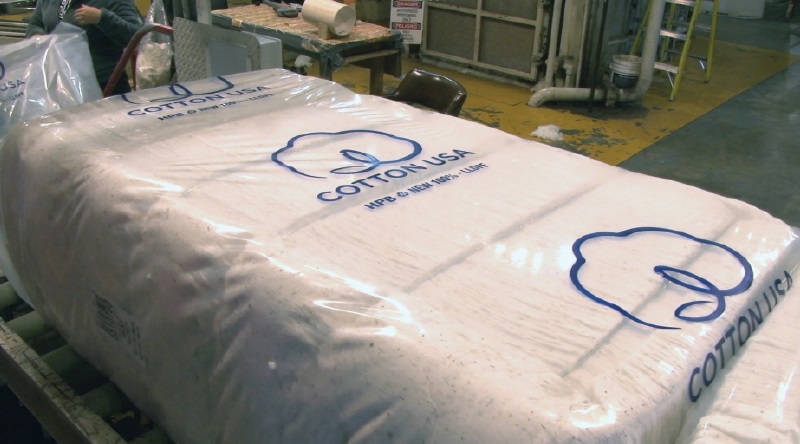Future Fiber Gets Technical
The Hinestroza Research Group’s experimentation began with the intent to control charges on the surface of natural fibers. Dr. Juan Hinestroza told Cotton International that “we initially discovered we could deposit nanolayers of polymers; then we tried atomic layers of metal oxides; and lately our work has been focused on nanoparticles.”
From there, the group used self-assembly phenomena to modify textiles’ barrier properties, significantly increased chemical selectivity, and, in short, generated some amazing potential attributes for cotton garments and home use.
Enhancing Natural Fiber
Some of the resulting technologies to come from this work could create interesting and exciting applications for the textile industry in the field of smart and interactive clothing. Flexible and more permeable materials are just a few features created from applications developed from the group’s work. Hinestroza says: “Platinum, ruthenium and palladium nanoparticles supported on cotton fabrics have allowed us to create flexible catalytic mantles capable of purifying air, as well as decomposing hazardous gases.”
One plus for the organic cotton industry, which typically uses natural dyes for color and is limited to the faded or duller colors such dyes produce, is that, as Hinestroza says: “Our new developments are focused to create color without dyes by taking advantage of the plasmonic effects of the nanoparticles. Imagine a cotton garment capable of changing color according to the surrounding environment – we call it ‘interactive camouflage.’”
In yet another positive observation, Hinestroza explains that these applications are compatible with one another: “We can have cotton fibers capable of managing sweat via nanolayers of polymers, offering UV protection using metal oxides and killing bacteria and eliminating odors via nanoparticles.” He sees these materials as “a portfolio of compatible technologies that can be customized to individual applications.”
The Hinestroza Research Group focuses about one-third of its research on natural fibers; another third is on creating synthetic nanofibers; and the rest of the time and effort is directed towards developing methods to measure nanoscale phenomena on fibers. “I particularly like natural fibers because they are very challenging to work with,” Hinestroza says, “and the modification methods need to be robust and highly reproducible.” He also enjoys working on cotton due to its use worldwide, and adds: “I believe that new developments for cotton can benefit more people and have a major impact in the fiber, textile and apparel worlds.”
So-called “smart” textiles are already in consumer use as stain- and wrinkle-resistant products; more intricate materials are being tested in such applications as coats for firefighters with the ability to monitor both the environment and the wearer’s vital signs (see Cotton International Magazine’s “Cotton Is In Fashion”, September 2007). The research, discoveries and developments by the Hinestroza Research Group could add another dimension to fabrics that respond to outside stimuli.
Award Winning Investigation
Hinestroza, who in 2005 received the James D. Watson Young Investigator Award from the New York State Foundation for Science, Technology and Innovation, was recently named 2007 Educator of the Year in Higher Education by the Society of Hispanic Professional Engineers. Earlier this year, he was awarded a Faculty Early CAREER Development grant from the National Science Foundation to further explore unique methods of controlling the positioning of nanoparticles on fibrous substrates. A Cornell University news story describes his work in this way: “While fundamental in nature, his research may create a new avenue for the development of smart and interactive textiles.”
Hinestroza’s research is sponsored by a university laboratory, and is therefore focused on discovering new phenomena and understanding complexities at the nanoscale fundamentally relevant to fiber and polymer science to create knowledge. However, the methods the group develops also have great commercial potential. Hinestroza says that they will “unravel the chemical mechanisms behind these phenomena and work with interested companies in scaling up our processes so our discoveries are of use to the common citizen.”
Commercial Applications
The group’s development of nanofibers with unique magnetic signatures has already shown potential in anticounterfeiting and positive identification applications.
The techniques and technologies arising from this work will create “highly interactive and multifunctional future fabrics,” according to Hinestroza. One challenge his team of researchers is working on is maintaining fabric comfort while adding complex capabilities. Hinestroza believes that working at the nanoscale can help circumvent this issue, “hopefully with minor impact on cost and negligible damage to the environment.”
He also believes that, as this technology can use conventional wet processing equipment with minor modifications, little or no capital investment by mills or producers will be necessary. However, Hinestroza adds: “The real investment may be in developing the metrology tools to assess the phenomena at industrial production rates.” At this point, a team of Cornell’s Master of Business Administration (MBA) students are creating a business plan to commercialize some of the Group’s ideas, with hopes of estimating the cost-effectiveness of these processes by May 2008.
Hinestroza is focused on his work, but is still looking towards the future: “I believe that as many of these new technologies evolve, it is important to consider the need to educate future generations of professionals with the appropriate knowledge to take full advantage of these new developments.”
For more information, please visit www.HinestrozaResearch.com and www.people.cornell.edu/jh433.








